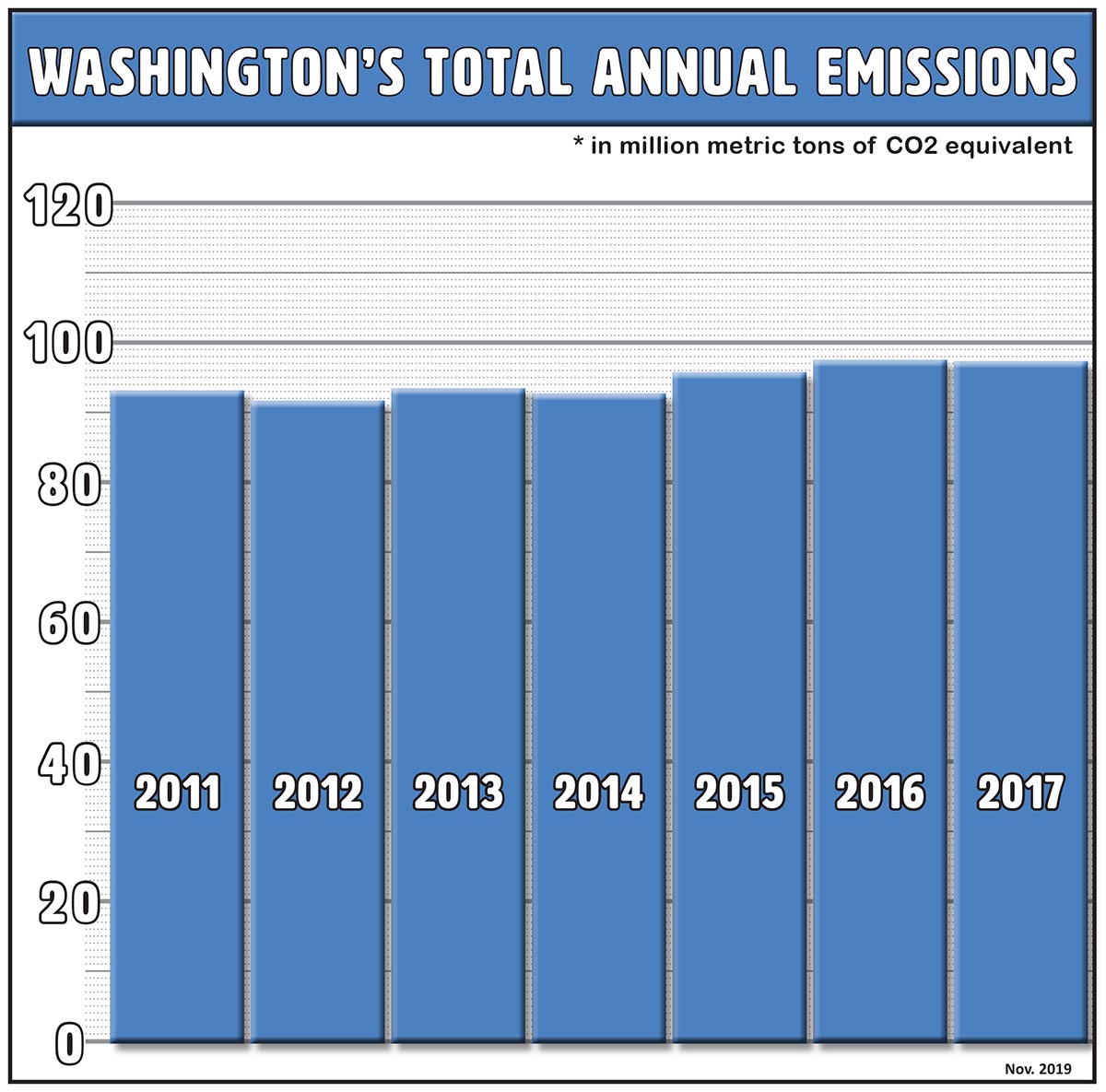New data on greenhouse gas emissions in Washington shows signs of progress in the state’s efforts to cut the carbon pollution that is driving climate change. According to the latest data from the Washington Department of Ecology, total emissions rose 1.7 percent in 2016 to reach 97.6 million metric tons of carbon dioxide equivalent, then fell slightly in 2017 to 97.5 million metric tons.
In both 2016 and 2017, Washington’s growing economy drove increases in emissions from aviation, shipping, and home heating, but sharp reductions in emissions from electricity generation balanced those out.
That’s in part due to electric utilities ramping up their investments in renewable energy sources like wind and biomass to meet the commitments adopted by Washington in the 2006 Energy Independence Act, which requires that 15% of energy in the state come from renewables by 2020.
“What we’re seeing is that our state’s carbon reduction strategies are beginning to pay off,” said Maia Bellon, Ecology’s director. “Even with the best economy in the nation, Washington was able to hold the line on emissions, but we need to do more and do it faster.”
More reductions are on tap in the years ahead. Washington took several important steps to reduce emissions earlier this year, when Gov. Jay Inslee signed a new law requiring all electricity used in the state to be carbon-neutral by 2030, and to come completely from non-emitting sources – like hydropower, nuclear, wind and solar – by 2045. The 2019 Legislature also approved measures that will cut emissions from heating and cooling buildings, phase down the use of climate change “super pollutants” in refrigeration, and boost sales tax incentives for electric vehicles.
The continued increase in emissions in many categories shows the challenges ahead if Washington is to meet the greenhouse gas emission targets set by the Legislature in 2008. Those targets require overall state emissions to match 1990 levels by 2020, then fall to 25% below 1990 levels by 2035, and to 50% below 1990 levels by 2050.
Even more troubling is the concern that those targets are not aggressive enough to prevent the worst effects of climate change that threaten Washington’s water supplies, forests, coastlines, and key industries like shellfish farming. Ecology plans to issue a report later this year providing updated recommendations for emissions targets.
“There are a lot of reasons for optimism based on this new data, but the size of the challenge ahead of us has not diminished,” Bellon said. “The good news is that we are seeing that we can stop the growth of emissions – without putting the brakes on our economy.”
For more information on Washington’s greenhouse gas emissions, and steps the state is taking to reduce carbon pollution, go to www.ecology.wa.gov/ghg.


